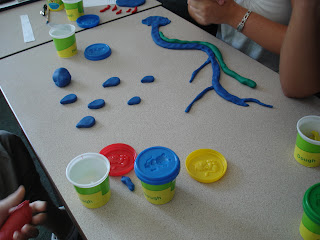For Tom's benefit (and a reminder for Laura who was too busy practising her long jump skills to worry about geography...) - a quick summary of this afternoon's adventures...
First, we thought about the factors that we thought might affect rates of infiltration - they included:
- vegetation cover
- the compactness of the soil
- antecedent weather conditions
- current levels of soil moisture
- the intensity and duration of the rainfall event
You then decided how you would measure infiltration rates, and formulated your hypotheses.
You should now have a complete set of results for your group and the next thing is to write up your investigation.... Remember:
Aim - what you are trying to find out.
Hypotheses - predictions about what you think you will find. Make sure these are specific.
Method - describe what you did. This should be clear and concise, with enough detail that someone else could go out and replicate your experiment. (It shouldn't, however, be written as a set of instructions!)
Results/Data Presentation - in this case, this will be your graphs. Precisely what you are plotting will vary slightly depending on how you measured your infiltration rates. However, they should show clearly how the infiltration rate at each site changed over time.
Analysis - what do your results show? Start with general patterns and trends, and then explain in more detail. Do your results show what you expected to find? Are there any surprising results/anomalies? If so, can you explain them?
Conclusion - return to your aims and hypotheses, and sum up what you've found out.
Evaluation - how successful was your investigation? Are there things you could improve if you were to repeat the investigation? How could you extend/develop the investigation?
As I said this afternoon, the experiment we did was by no means perfect - the main aims were to get you thinking a bit, working in groups and developing some skills, and getting used to the idea of writing up a geographical investigation.
Whilst I am expecting a decent piece of work from everyone, I am not expecting pages and pages - it should be clear and concise!
Your completed work is due in on WEDNESDAY. Don't forget to come and see me or email if you have problems - don't turn up without the work!!



 The finished product....
The finished product....



